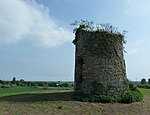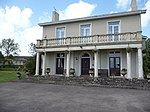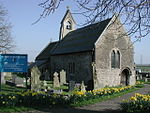Rogiet Hoard
1998 archaeological discoveries1998 in WalesHistory of MonmouthshireHoards from Roman BritainMetal detecting finds in Wales ... and 2 more
Treasure troves in WalesTreasure troves of Roman Britain
The Rogiet Hoard is a hoard of 3,778 Roman coins found at Rogiet, Monmouthshire, Wales in September 1998. The coins dated from 253 up until 295–296. The hoard notably contained several faulty issues, and some rare denominations, including those depicting the usurper emperors Carausius and Allectus.
Excerpt from the Wikipedia article Rogiet Hoard (License: CC BY-SA 3.0, Authors).Rogiet Hoard
Minnett's Lane,
Geographical coordinates (GPS) Address Nearby Places Show on map
Geographical coordinates (GPS)
| Latitude | Longitude |
|---|---|
| N 51.589 ° | E -2.787 ° |
Address
Minnett's Lane
Minnett's Lane
NP26 3UF , Rogiet
Wales, United Kingdom
Open on Google Maps









